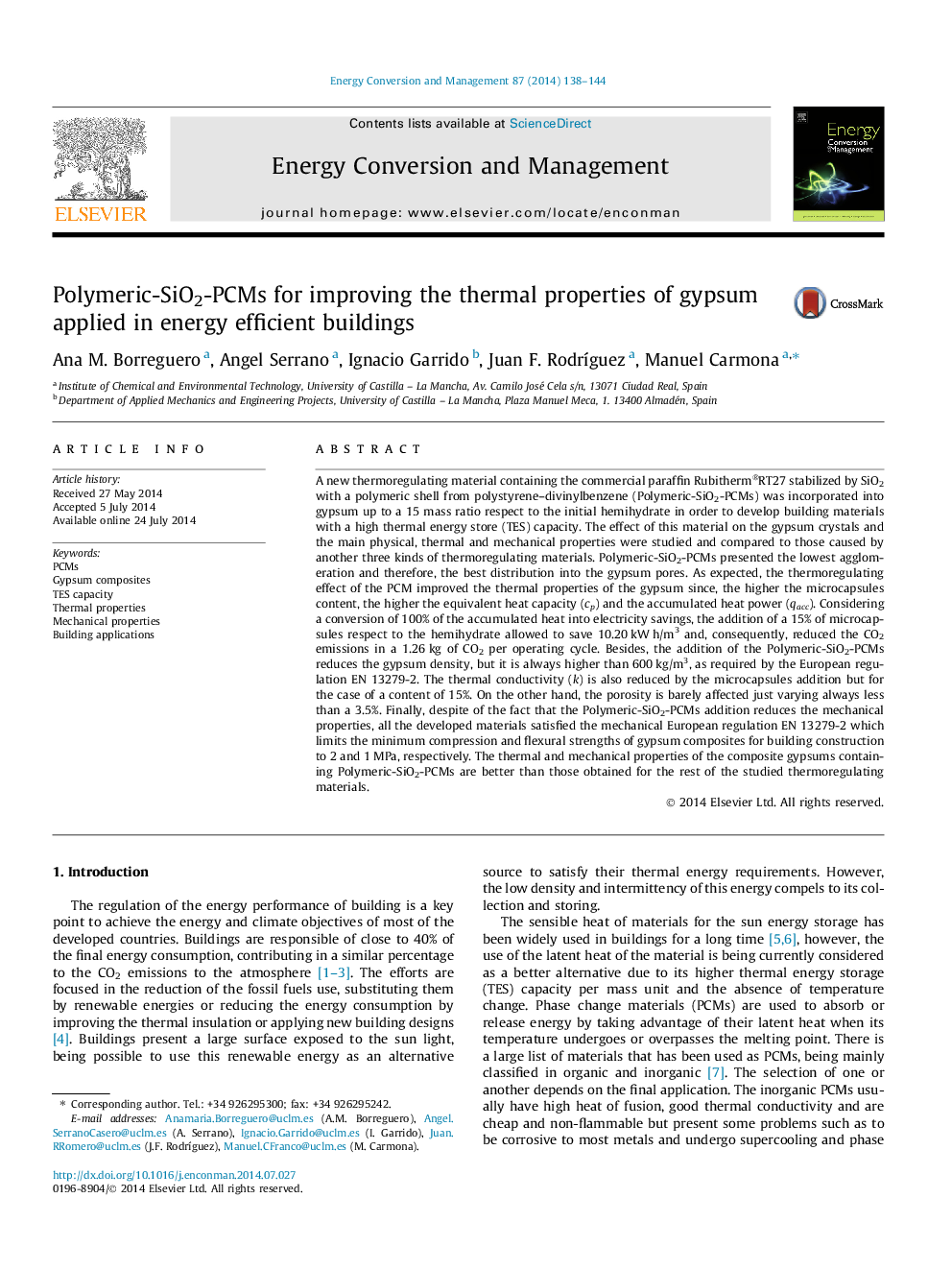| کد مقاله | کد نشریه | سال انتشار | مقاله انگلیسی | نسخه تمام متن |
|---|---|---|---|---|
| 760700 | 1462875 | 2014 | 7 صفحه PDF | دانلود رایگان |

• Inorganic–organic PCM microcapsules were incorporated into gypsum.
• The physical and thermal properties of the gypsum composites were studied.
• The gypsum composites presented better properties than some previously investigated.
• 10.20 kW h/operating cycle could be saved in a room with 1 m3 of this material.
• 1.26 kg of CO2 emissions could be reduced per one operating cycle.
A new thermoregulating material containing the commercial paraffin Rubitherm®RT27 stabilized by SiO2 with a polymeric shell from polystyrene–divinylbenzene (Polymeric-SiO2-PCMs) was incorporated into gypsum up to a 15 mass ratio respect to the initial hemihydrate in order to develop building materials with a high thermal energy store (TES) capacity. The effect of this material on the gypsum crystals and the main physical, thermal and mechanical properties were studied and compared to those caused by another three kinds of thermoregulating materials. Polymeric-SiO2-PCMs presented the lowest agglomeration and therefore, the best distribution into the gypsum pores. As expected, the thermoregulating effect of the PCM improved the thermal properties of the gypsum since, the higher the microcapsules content, the higher the equivalent heat capacity (cp) and the accumulated heat power (qacc). Considering a conversion of 100% of the accumulated heat into electricity savings, the addition of a 15% of microcapsules respect to the hemihydrate allowed to save 10.20 kW h/m3 and, consequently, reduced the CO2 emissions in a 1.26 kg of CO2 per operating cycle. Besides, the addition of the Polymeric-SiO2-PCMs reduces the gypsum density, but it is always higher than 600 kg/m3, as required by the European regulation EN 13279-2. The thermal conductivity (k) is also reduced by the microcapsules addition but for the case of a content of 15%. On the other hand, the porosity is barely affected just varying always less than a 3.5%. Finally, despite of the fact that the Polymeric-SiO2-PCMs addition reduces the mechanical properties, all the developed materials satisfied the mechanical European regulation EN 13279-2 which limits the minimum compression and flexural strengths of gypsum composites for building construction to 2 and 1 MPa, respectively. The thermal and mechanical properties of the composite gypsums containing Polymeric-SiO2-PCMs are better than those obtained for the rest of the studied thermoregulating materials.
Journal: Energy Conversion and Management - Volume 87, November 2014, Pages 138–144